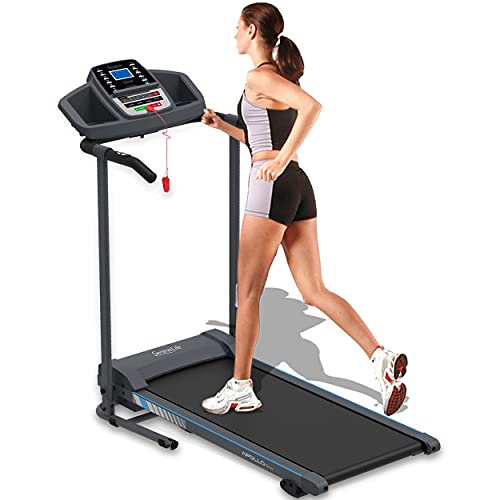10 Meetups On Motorised Treadmill You Should Attend
The Rise of Non-Motorised Treadmills: A Comprehensive Guide
In the last few years, the fitness market has actually seen an explosion of interest in non-motorised treadmills, also called self-propelled or manual treadmills. These ingenious pieces of devices have actually gained appeal due, in part, to their special design and the various health advantages they offer. In this blog site post, we will explore the advantages of non-motorised treadmills, their functions, and how they compare to conventional motorised treadmills. We will likewise supply answers to frequently asked questions to help you decide if a non-motorised treadmill is the ideal choice for you.
What is a Non-Motorised Treadmill?
A non-motorised treadmill is a type of workout machine that counts on the user's physical effort instead of a motor to power the belt. Unlike traditional treadmills that use an electric motor to propel the belt forward, non-motorised treadmills need the user to walk or run by physically pressing the belt with their feet. This style allows for a more natural running or walking movement and has a number of advantages over its motorised counterparts.
Advantages of Non-Motorised Treadmills
Advantages
Non-Motorised Treadmills
Motorised Treadmills
Calories Burned
Higher due to self-propulsion
Continuous based on speed
Expense
Generally less expensive to buy and keep
More expensive and may need repairs
Injury Risk
Lower, due to adjustable strength and natural form
Potential for higher impact injuries
Mobility
Typically lighter and simpler to move
Bulkier and generally much heavier
Peaceful Operation
Operates quietly as there is no motor
Can be noisy due to mechanical parts
Adjustability
User-controlled speed and incline
Repaired speeds and incline settings
Key Features of Non-Motorised Treadmills
- Self-Propelled Design: Users set their rate, permitting for a personalized exercise that can adapt to numerous fitness levels.
- Adjustable Incline: Most non-motorised treadmills feature an adjustable incline, supplying users with options to increase exercise strength.
- Light-weight and Portable: Many non-motorised designs are designed to be lighter and more portable than motorized variations, enabling users to quickly store and transport them.
- Resilience: With fewer moving parts than motorised treadmills, non-motorised options often require less maintenance and are more durable in time.
- Compact Size: Non-motorised treadmills typically have a smaller sized footprint, making them ideal for home fitness centers with restricted space.
Comparing Non-Motorised and Motorised Treadmills
When picking between a non-motorised and a motorised treadmill, it's necessary to understand the strengths and weaknesses of each type. The following sections will highlight a few of the key comparisons.
Cost-Effectiveness
- Non-Motorised Treadmills: Typically, they come at a lower price point, with less parts that might break or need maintenance. www.hometreadmills.uk -efficiency makes them available to a wider audience.
- Motorised Treadmills: While typically more versatile, they often include a higher initial investment in addition to possible continuous costs related to repair work and electricity.
Workout Intensity
- Non-Motorised Treadmills: Because users control the speed and strength, they can attain a more extreme workout by changing their speed and inclines anytime.
- Motorised Treadmills: These featured pre-set programs and settings that might restrict the variability and strength based upon user experience.
Space Considerations
- Non-Motorised Treadmills: Their compact size and lightweight nature make them perfect for little spaces, permitting simple storage when not in usage.
- Motorised Treadmills: These require a devoted location and normally take up more functional space, making them less suitable for studio apartments or homes.
Regularly Asked Questions (FAQ)
1. Are non-motorised treadmills ideal for newbies?
Yes, non-motorised treadmills appropriate for beginners since they allow users to control their speed and intensity, making workouts more manageable. Individuals can begin at a slower speed and gradually increase their effort as their physical fitness levels enhance.
2. Can I run on a non-motorised treadmill?
Definitely! Non-motorised treadmills are created to accommodate both walking and running. Many users find that they can run at numerous speeds, making it an excellent option for runners who desire to exercise inside.
3. Do non-motorised treadmills require electricity?
No, one of the primary benefits of non-motorised treadmills is that they do not require electricity, making them a more sustainable choice for working out.
4. How do I preserve a non-motorised treadmill?
Upkeep for a non-motorised treadmill is very little compared to motorised versions. Routinely check the belt for wear and tear, and ensure it is tidy and devoid of debris. Following the manufacturer's standards will help extend its life-span.
5. Are there any limitations to non-motorised treadmills?
While non-motorised treadmills offer numerous benefits, they might not have some features that advanced motorised alternatives provide, such as preset exercise programs, heart rate monitors, and advanced incline settings. Nevertheless, for numerous physical fitness lovers, the self-propelled nature and benefits outweigh these factors to consider.
Non-motorised treadmills have become a significantly popular choice for those seeking a cost-efficient, portable, and effective ways of enhancing their fitness. Their unique style permits adjustable workouts customized to individual needs, making them appropriate for nearly anybody, no matter fitness level. Aspects such as space, budget, and desired exercise strength should direct your choice. With their series of advantages, non-motorised treadmills are an excellent addition to any physical fitness routine.
Whether you are a skilled athlete, a casual walker, or simply starting your fitness journey, consider offering non-motorised treadmills a try; their adaptability and affordability might surprise you!
